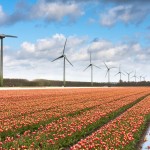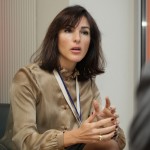 A new Danish survey on people living close to wind turbines shows that four out of five people feel there are no downsides to the experience – and 23 % of those surveyed became more positive towards the turbines within one year of installation. In addition, 59% of respondents answered “neither positive nor negative” to the question of whether their attitude changed over one year of living with the turbines in their midst.
A new Danish survey on people living close to wind turbines shows that four out of five people feel there are no downsides to the experience – and 23 % of those surveyed became more positive towards the turbines within one year of installation. In addition, 59% of respondents answered “neither positive nor negative” to the question of whether their attitude changed over one year of living with the turbines in their midst.
The nationwide analysis, carried out by an independent consultancy, was based on interviews with 1,278 people living within a radius of 2 kilometres (1.25 miles) of a wind turbine that was at least 120 metres (394 feet) tall and had been in operation for a year at minimum. This height meant that these were modern turbines, installed between 2002 and 2011. The people lived close to 125 turbines, spread over 30 different wind projects.

Ana Aguado, CEO Friends of the Supergrid
Europe’s energy infrastructure urgently needs updating. In this interview published in the latest edition of EWEA’s Wind Directions magazine, Ana Aguado, CEO of Friends of the Supergrid, explores how this can be done.
What is the supergrid and why do we need it?
We define the supergrid as “a pan-European transmission network facilitating the integration of large-scale renewable energy and the balancing and transportation of electricity, with the aim of improving the European market”.
With such a definition it is stated quite clearly that in order to transform our energy systems to one that is based on clean and indigenous resources there is no other way but to build a European high voltage network able to integrate all those renewable energy sources, cope with their variability and transport electricity over long distances. We call such an EU planned network the supergrid.
 Beyond an anaemic international agreement to extend the Kyoto Protocol to 2020, it is hard to see what positive momentum was achieved at the end of the two-week UN conference on climate change which ended on Saturday in Doha.
Beyond an anaemic international agreement to extend the Kyoto Protocol to 2020, it is hard to see what positive momentum was achieved at the end of the two-week UN conference on climate change which ended on Saturday in Doha.
While almost 195 nations did endorse the proposal to extend Kyoto past 2012, no new targets for reducing toxic global greenhouse gas emissions from burning fossil fuels and no binding plan to keep global temperature rise to no more than 2 degrees Celsius were announced.
Even the Executive Secretary of the UN Framework Convention on Climate Change (UNFCCC), Christiana Figueres, gave a luke warm response to the meeting.
 Electrical power generation from wind energy last year prevented as much global warming pollution as taking 13 million cars off the road, says a new widely-quoted report published in the US.
Electrical power generation from wind energy last year prevented as much global warming pollution as taking 13 million cars off the road, says a new widely-quoted report published in the US.
The report — Wind Power for a Cleaner America: Reducing Global Warming Pollution, Cutting Air Pollution and Saving Water — adds that wind power saved the equivalent amount of 26 billion gallons of water, more than enough to meet the annual domestic use needs of a city the size of Boston.
Released last week by Environment America Research & Policy Center, a federation of state-based, citizen-funded environmental advocacy organizations, the report also said wind energy helped reduce air pollution, including reductions of 137,000 pounds of nitrogen oxide emissions and 91,000 pounds of sulfur dioxide emissions.
 Offshore wind farms can create a host of benefits for the local marine environment, as well as combatting climate change, a new study by the Marine Institute at Plymouth University has found.
Offshore wind farms can create a host of benefits for the local marine environment, as well as combatting climate change, a new study by the Marine Institute at Plymouth University has found.
The Marine Institute found that wind farms provide shelter to fish species since sea bottom trawling is often forbidden inside a wind farm, and it found that turbine support structures can create artificial reefs for some species.
A separate study at the Nysted offshore wind farm in Denmark confirmed this finding by saying that artificial reefs provided favourable growth conditions for blue mussels and crab species. A study on the Thanet offshore wind farm in the UK found that some species like cod shelter inside the wind farm.
 A new Danish survey on people living close to wind turbines shows that four out of five people feel there are no downsides to the experience – and 23 % of those surveyed became more positive towards the turbines within one year of installation. In addition, 59% of respondents answered “neither positive nor negative” to the question of whether their attitude changed over one year of living with the turbines in their midst.
A new Danish survey on people living close to wind turbines shows that four out of five people feel there are no downsides to the experience – and 23 % of those surveyed became more positive towards the turbines within one year of installation. In addition, 59% of respondents answered “neither positive nor negative” to the question of whether their attitude changed over one year of living with the turbines in their midst.






 Comments
Comments



